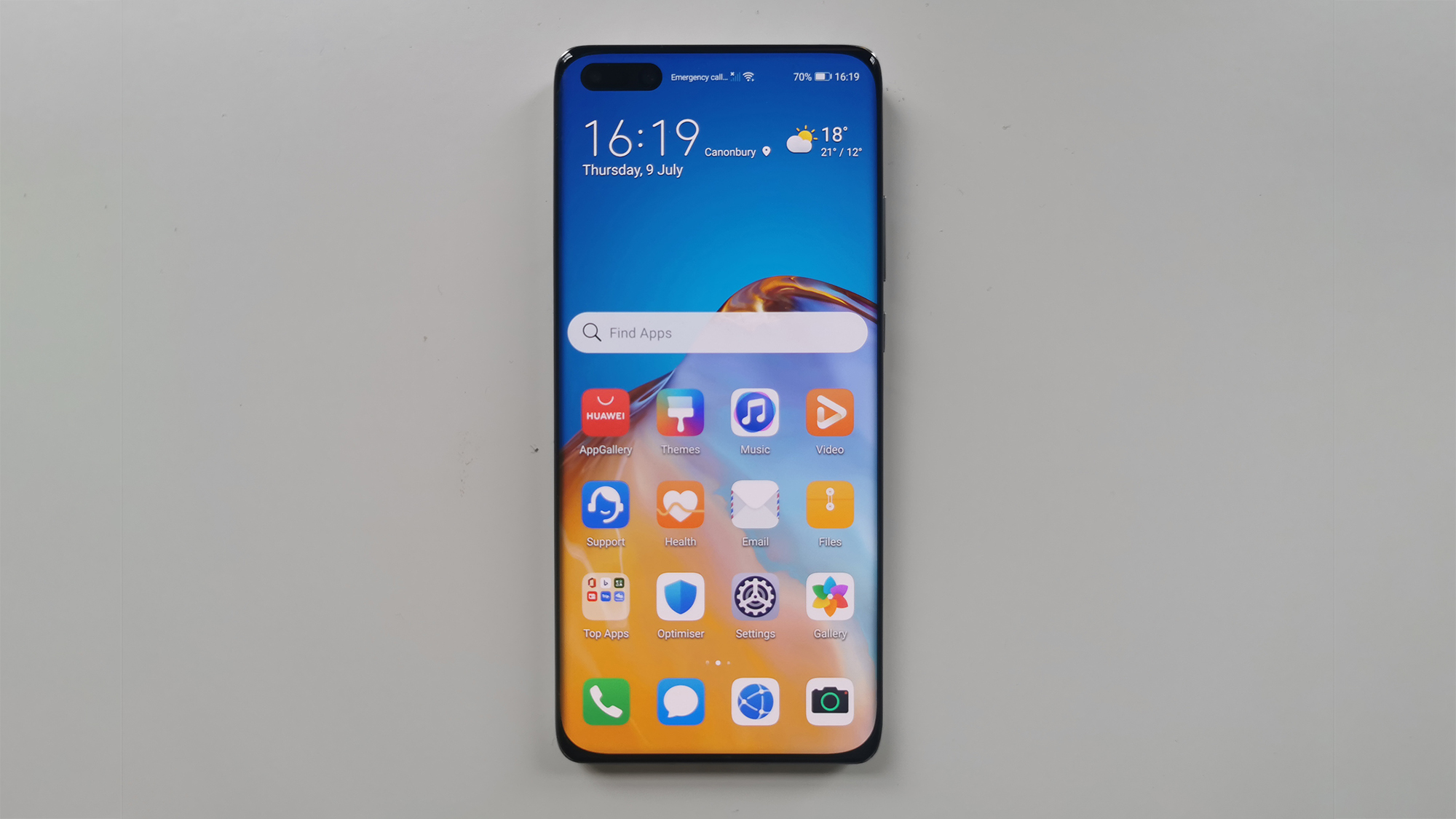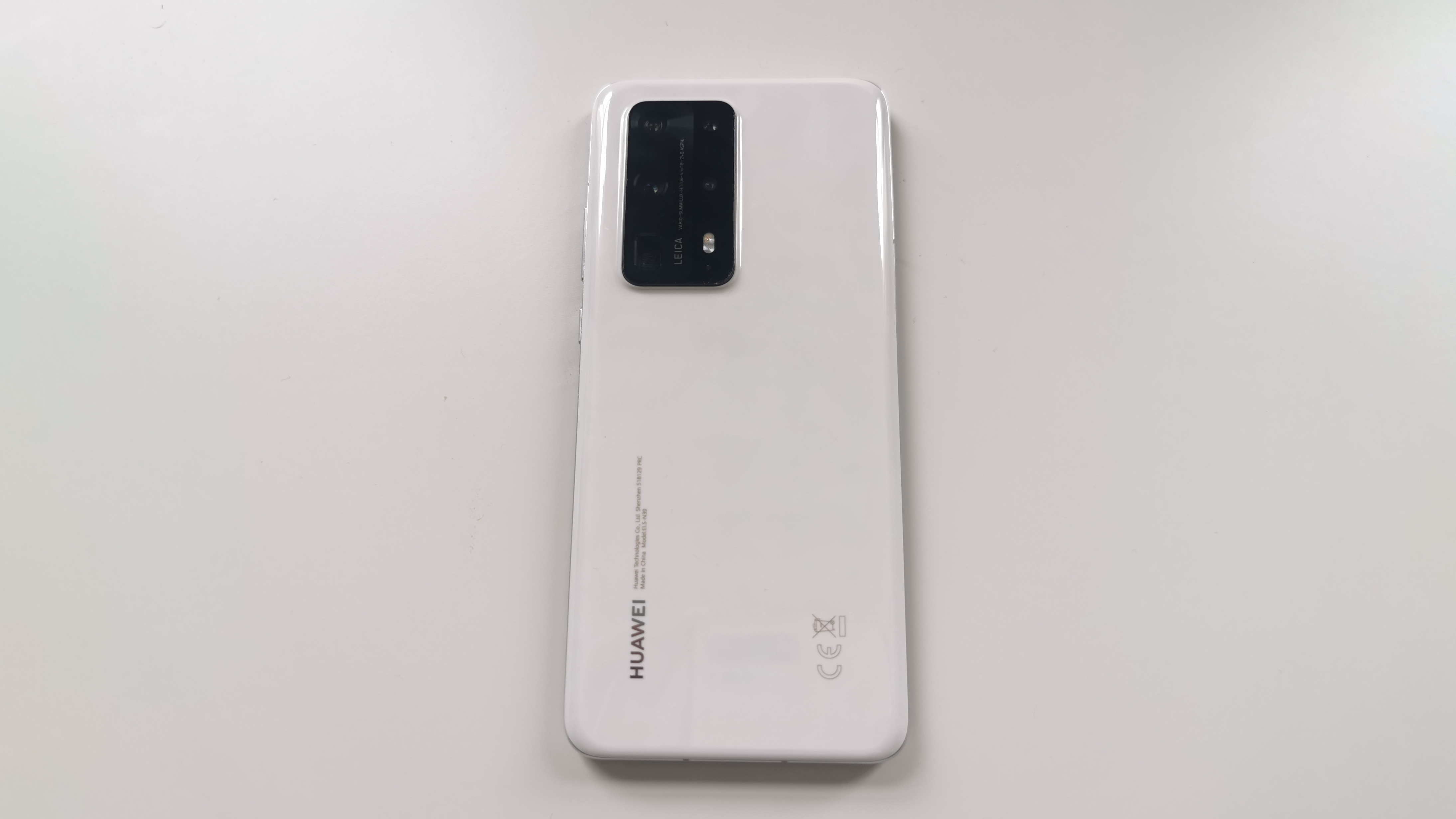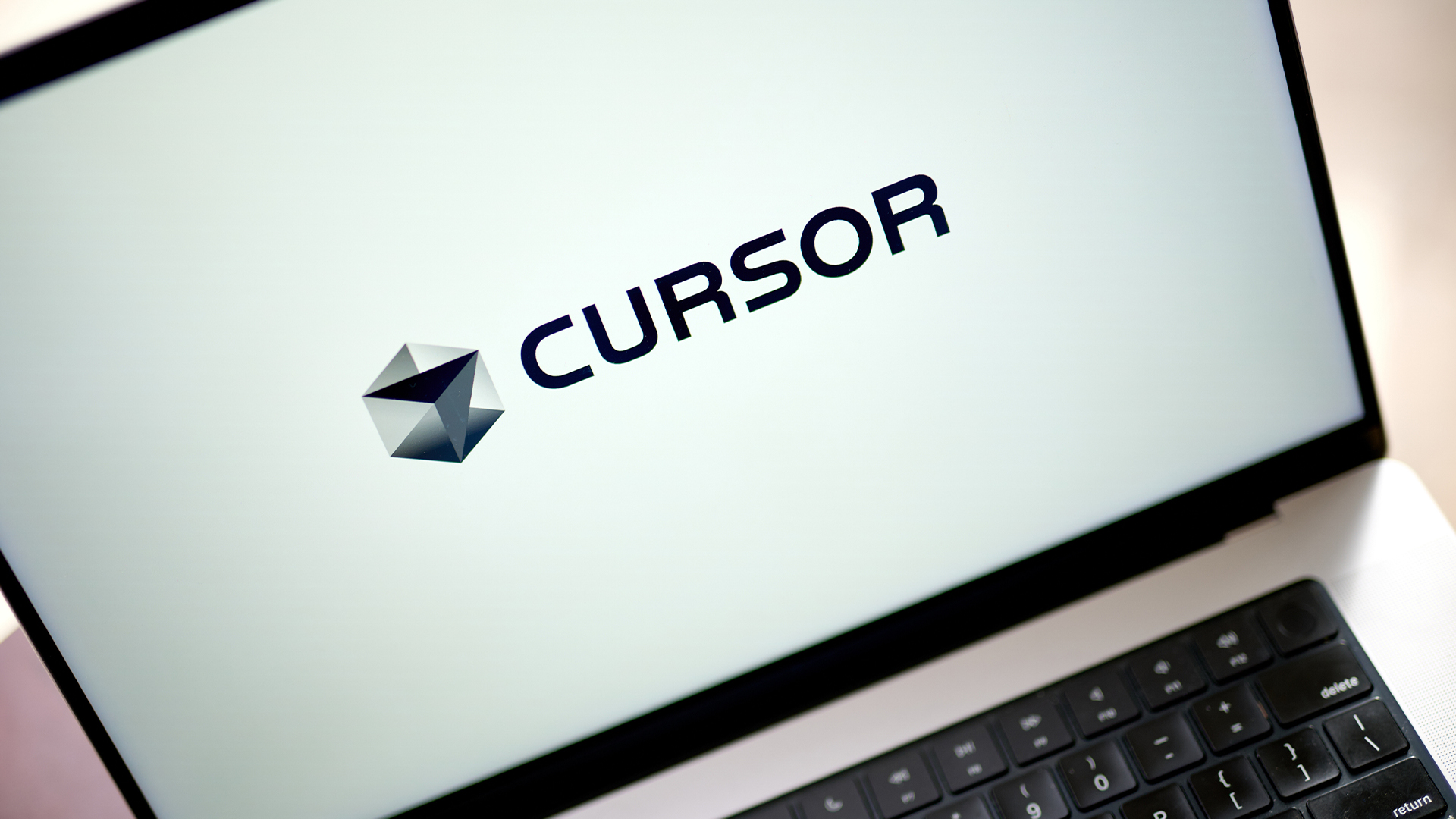Huawei P40 Pro Plus review: Possibly the world’s best smartphone...with a catch
The Chinese phone maker delivers its best handset yet, but is it worth it for the lack of Google services?
-
+
The best smartphone camera money can buy
-
+
Sleek and stylish
-
+
Amazing screen
-
+
Great performance
-
-
Limited app access














There probably isn’t a more controversial smartphone right now than the Huawei P40 Pro Plus. With all the drama that’s transpired in the States regarding the banning of Google services on Huawei devices, the company has had to make some major changes to how it sells its handsets in the West. As a result, the P40 Pro Plus is seriously lacking in terms of access to apps when compared to most of its rivals, as there’s no Google Play Store.
However, what it lacks in one area, it sure as hell makes up in another. In this instance, it’s the camera. In true Huawei style, the company’s latest flagship flaunts a stellar seven-camera setup that has to be one of the best we’ve ever used on a smartphone. But what else is on offer for its mammoth £1,299 price tag, and is it all worth missing out on Google Drive and the like?
Huawei P40 Pro Plus review: Design
If you’ve paid any attention to Huawei’s smartphone lineup over the past few years, you’ll know that the brand is renowned for its ability to cram lots of impressive hardware into a sleek and relatively slender form factor. Well, the Chinese phone maker has done it again with the P40 Pro Plus, only this time around, those familiar with its previous handsets such as the P30 Pro will notice that the company’s latest release is one of the chunkiest we’ve seen for a while.
Measuring 9mm thick, the P40 Pro Plus is only 0.6mm thicker than the P30 Pro, but it’s very obvious in the hand. It’s also noticeably heavier, weighing 226g, which is 34g more than its predecessor but not irritatingly so. Overall, it’s a very impressive design, with the highlight being a never-before-seen construction on the rear consisting of a “nano-tech” polished ceramic material that comes in either white or black and is said to offer a finish almost as tough as sapphire glass. This is broken up with a camera plate featuring an array (five, to be precise) of different sized cameras and a flash, which are arranged neatly enough to retain a high level of elegance.
It’s also worth noting that the P40 Pro Plus has an IP68 rating, which means that “based on certain defined test conditions” the device is protected against harmful ingress of static water at up to 1.5 meters, for up to 30 minutes.

Huawei P40 Pro Plus review: Display
When it comes to display, the Huawei P40 Pro Plus switches out an AMOLED screen (as seen in its predecessors) for a 6.58in OLED panel, which gives much deeper blacks for a richer-looking colour pallet. With a resolution of 1,200 x 2,640 pixels (441ppi) in a 19.8:9 aspect ratio, the overall display is nothing short of stunning. It’s also the curviest we’ve seen on an Huawei phone yet, wrapping halfway around all sides of the handset’s chassis.
In terms of color accuracy, the P40 Pro Plus has two display options - ‘Vivid’ and ‘Normal’. As default, the screen mode is set to Vivid, which in our tests gave a great excellent colour accuracy average of Delta E of 3.3. However, you will find that the Normal (sRGB) display colour mode will actually give you more accurate colour results, if that’s what you’re looking for. It scored a pretty much perfect calibration with a fantastic 100% sRGB coverage of the colour gamut and an average Delta E of 1.3. Nevertheless, each of the color saturation settings can be fine tuned if the default one is not quite what you want.
Sign up today and you will receive a free copy of our Future Focus 2025 report - the leading guidance on AI, cybersecurity and other IT challenges as per 700+ senior executives
As for the display refresh rate, the P40 Pro Plus display supports 90Hz. While not the fastest in class, it does allow for an exceptionally smooth picture. The OLED panel also means that brightness is decent, with the screen achieving a level of to 760cd/m2 when set to Auto mode. This is an ideal boost for those summer days, performing very well in really bright conditions.
As with the last few Huawei models, the P40 Pro Plus doesn’t have a home button. Instead, it makes use of biometric security housed within the screen, like the P30 Pro and P20 Pro that came before it. This has got much better over the years and it does work well most of the time on the P40 Pro Plus, but will still fail to recognise fingerprints now and again. You’re definitely better off relying on the face unlock feature to gain access to your homescreen.
Huawei P40 Pro Plus review: Performance and battery
As with the last few flagship handsets from Huawei, the P40 Pro Plus houses the firm's own brand of processor. This time, it’s the most recent Kirin 990 5G chipset, a 2.86GHz octa-core processor built using a 7nm+ fabrication process with EUV technology, which basically means it squeezes over 10 billion transistors into one chip to make it more power efficient. In theory, the smaller fabrication should equate to more power and thus a better battery life in the same chip size, but we’ll talk more about that in a bit.

Joining the Kirin CPU is 8GB of RAM, which equates to the same as seen in the P30 Pro from a year ago, so we’re expecting to see a little more in Huawei’s latest release. February’s Samsung Galaxy S20 Ultra, for instance, touts 16GB RAM.
Unfortunately, due to the limited availability of apps available in the Huawei app store at present, we were unable to download the Geekbench app to run our usual performance benchmark. However, we were able to manage an Antutu benchmark, with the handset scoring 493,436, which is quite the result, especially compared to the P30 Pro we have, which scored 373,295.
In terms of real life performance, the P40 Pro Plus is exceptionally nippy. In fact, it feels like one the fastest smartphones we've ever used, responding to every command we throw at it in a flash, even with multiple apps open.
So, how does the battery cope with all this power? Well, as you can expect with a 4,200mAh battery like this, very well indeed. In practice, it easily powers through a full day of intensive use before dying. You’d probably get a day a half out of it if you were careful. On the other hand, our in-house video rundown test shows that the Huawei's P40 Pro Plus’ stamina isn’t quite as impressive as its predecessor, the P30 Pro, reaching a total of 17hrs 14mins before its 4,200mAh capacity battery died. That’s quite a substantial difference of 4hrs 8mins when compared to the P30 Pro’s score of 21hrs 22mins - although the latter does have a slightly bigger 4,300mAh battery capacity and a lower screen resolution.
The P40 Pro Plus also supports 40W fast charging via a USB Type-C port. 40W wireless charging is supported, too. For connectivity, it should come as no surprise that there is no 3.5mm headphone jack or MicroSD expansion, but it does only come in a 512GB storage option so even the lower option should be plenty to store all the basics, lots of songs, media files, games and more.

Huawei P40 Pro Plus review: Software
As we mentioned earlier, one of the major downfalls that you cannot escape when buying the P40 Pro Plus is that there is no longer support for those much-loved Android apps. While it does still run the latest version of Google’s operating system, Android 10, it’s Google’s services that have been given the chop, including applications such as Gmail and Google Maps.
It’s incredibly frustrating going from using a normal Android device to this more limited experience. The lack of familiar apps makes it a lot less useful to the average Joe in the West than a device from a rival like Oppo or Samsung, for example.
Nonetheless, Huawei does have its own AppGallery which comes preinstalled on this device. While most of the apps you’re likely to use on a daily basis are still missing, there is a new additional ‘app search’ dedicated app preinstalled, too, called Petal Search. This will search the web for compatible app .apk packages from big players such as Facebook, Instagram, WhatsApp, etc and help you install them on your device. It does feel a little dodgy but in most instances it works well. Still, there are going to be apps you want that it just cannot find or won’t work properly once installed. It’s a bit hit and miss, generally, which can feel disappointing, especially considering how much this phone costs. One positive, though, is that Huawei’s EMUI 10 UX is a delight to use. It’s smooth and responsive, making multi-tasking a breeze.
Huawei P40 Pro Plus review: Camera(s)
Although the P40 Pro has a brilliant design, snappy processor and decent battery life, the real standout feature is the seven Leica camera setup. There’s five on the rear consisting of a 50MP Ultra Vision main camera, a 40MP ultra-wide snapper with wide-angle f/1.9 lens and image stabilisation, a 3D depth-sensing camera and - unlike most camera phones - dual telephoto cameras, both packing an 8MP resolution.
The first telephoto camera features a 3x zoom and an f/2.4 lens, while the second is the real star of the show as it features a 240mm periscope and 10x optical zoom, combined with an f/4.4 aperture. Ironically, for a company regularly accused of espionage, this camera is capable of capturing incredible detail from huge distances. So much so that it can actually leave you quite gob-smacked how crisp these can appear when taken from so far away.

On the front, there’s a dual 32MP camera setup with IR 3D sensor for depth estimation and autofocus as well as 4K video recording. This, alone, would have been considered a brilliant rear camera set up just a few years ago. And the resulting images are just as impressive, with exposure, colour, noise, and bokeh effects leaving little to be desired.
Huawei P40 Pro Plus review: Verdict
From a hardware point of view, the Huawei P40 Pro Plus is probably one of the best smartphones available today. But the sad thing is, that’s not the end of the story. If you’re well and truly baked into Google’s Android services, it might not be possible to give them up - even for a phone with such an amazing specs sheet. Yes, the camera is nothing short of spectacular. So much so that, after just a few minutes paying around with it, you’re likely to be put in two minds as to whether you really do need Google’s apps that much. That’s going to be your main quandary here if you’re in the market for a new smartphone.
But what you need to ask yourself is: are the Google apps that you’re already very dependent on worth giving up for the best smartphone camera you can get your hands on right now? We’ll leave that to you, but with an RRP of £1,299, it’s a risky decision to make.
Huawei P40 Pro Plus specifications
| Body | Glass front, ceramic back, ceramic frame; IP68-rated for dust and water resistance. |
| Weight: | 226g |
| Screen | 6.58in quad-curved OLED, 1,200x2,640x resolution (440ppi) |
| Processor | Kirin 990 5G, octa-core processor, Mali-G76 MP16 GPU, tri-core NPU |
| RAM | 8GB RAM |
| Operating System | Android 10, EMUI 10.1 |
| Rear camera(s) | Primary: 50MP, Telephoto: 8MP, 3x optical zoom, Telephoto 2: 8MP, periscope 240mm 10x optical, Ultra wide angle: 40MP, ToF camera |
| Front camera | 32MP, ToF camera |
| Storage | 512GB |
| Battery size | 4,200mAh with Super Charge 40W and 40W wireless charging |
| Connectivity | 5G/4G/3G/GSM; Dual SIM, Wi-Fi 6+, Dual-band GPS, Bluetooth 5.1 + LE, NFC, USB Type-C |
-
 Anthropic says MCP will stay 'open, neutral, and community-driven' after donating project to Linux Foundation
Anthropic says MCP will stay 'open, neutral, and community-driven' after donating project to Linux FoundationNews The AAIF aims to standardize agentic AI development and create an open ecosystem for developers
By Ross Kelly Published
-
 Developer accidentally spends company’s entire Cursor budget in one sitting — and discovers worrying flaw that let them extend it by over $1 million
Developer accidentally spends company’s entire Cursor budget in one sitting — and discovers worrying flaw that let them extend it by over $1 millionNews A developer accidentally spent their company's entire Cursor budget in a matter of hours, and discovered a serious flaw that could allow attackers to max out spend limits.
By Emma Woollacott Published
-
 Global IT spending set to hit a 30-year high by end of 2025
Global IT spending set to hit a 30-year high by end of 2025News Spending on hardware, software and IT services is growing faster than it has since 1996
By Emma Woollacott Published